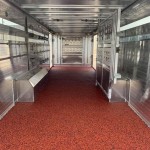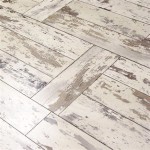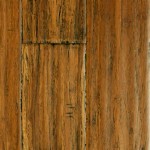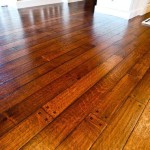Dark Wood Floor Kitchen Designs: A Guide to Style and Functionality
Dark wood floors have become increasingly popular in kitchen design, adding a touch of sophistication and warmth to the heart of the home. Their rich hues and natural beauty can create a striking contrast against lighter countertops and cabinetry, while also providing a foundation for various design styles. Whether you prefer a modern, minimalist aesthetic or a traditional, farmhouse charm, dark wood floors offer a versatile backdrop for your culinary haven.
The Allure of Dark Wood Floors
There are several compelling reasons why dark wood floors have become a staple in contemporary kitchen design. Their deep tones add a sense of depth and dimension to the space, making it feel more inviting and luxurious. Dark wood can also create a sense of grounding and stability, adding a touch of gravitas to the busy hub of the home. Furthermore, the natural grain patterns of dark wood add a unique character that will set your kitchen apart from the ordinary.
Beyond aesthetics, dark wood floors also provide practical benefits. They are naturally durable and resistant to scratches and dents, meaning they can withstand the wear and tear of daily kitchen activities. Dark wood also helps to minimize the visibility of dirt and grime, making it a good choice for busy families. Additionally, the rich color of dark wood floors can help to hide imperfections in the floor, creating a more polished and cohesive look.
Designing with Dark Wood Floors
The beauty of dark wood floors lies in their versatility. They can seamlessly integrate into a wide range of kitchen design styles, from sleek and modern to rustic and farmhouse. However, several key considerations can help you create a harmonious and visually appealing space when working with dark wood floors:
1. Balancing Light and Dark
One of the most important aspects of designing with dark wood floors is finding the right balance between light and dark elements. To prevent the space from feeling too heavy or gloomy, it's crucial to incorporate light accents in your kitchen, such as:
- Light countertops - White, cream, or light grey countertops can create a striking contrast with the dark floors, adding a sense of brightness and spaciousness.
- Light cabinetry - Opt for white, off-white, or light-colored cabinetry to create a balanced and airy feel. Choose lighter wood tones like maple or birch to complement the dark floors without overwhelming the space.
- Light walls - Neutral or light-colored walls can help to reflect light and create a sense of spaciousness. Consider using soft grays, pale blues, or warm beiges to create a calming and inviting atmosphere.
By incorporating light elements, you can prevent the dark wood floor from dominating the room and create a balanced and inviting space.
2. Adding Texture and Dimension
Dark wood floors can sometimes feel flat and monotonous, so it's important to add texture and dimension to prevent a one-dimensional look. Here are a few ideas:
- Patterned rugs - A patterned rug can add a touch of color and personality to the space, while breaking up the monotony of the dark wood floor. Choose a rug with a neutral background and bold accents to complement the dark floors without overpowering the room.
- Textured backsplash - A textured backsplash can add visual interest and depth to the space. Consider using tiles with a subtle pattern or a raised design to break up the uniformity of the dark floor.
- Metallic accents - Metallic accents can add a touch of glamour and sophistication. Consider using stainless steel appliances, brushed nickel hardware, or copper lighting fixtures to create a visually appealing contrast with the dark floors.
These design elements can help to create a more layered and interesting space, preventing the dark wood floors from becoming the dominant feature.
3. Lighting Considerations
Proper lighting is crucial when working with dark wood floors. Insufficient lighting can make the space feel dark and oppressive, while too much light can wash out the beauty of the floors. Here are some lighting tips to keep in mind:
- Natural light - Maximize natural light by utilizing large windows and skylights. This will help to brighten the space and highlight the richness of the dark wood floor.
- Layered lighting - Use a combination of ambient, task, and accent lighting to create a balanced and inviting space. Ambient lighting can be achieved with overhead fixtures, while task lighting can be provided by under-cabinet lights or pendant lights above the island. Accent lighting can be used to highlight artwork, architectural features, or specific areas of the kitchen.
- Warm lighting - Warm white light bulbs can help to enhance the natural warmth of the dark wood floor, creating a cozy and inviting atmosphere.
By implementing these lighting strategies, you can ensure that your dark wood floors shine and create an inviting and functional space.
Dark wood floors offer a unique and versatile element for kitchen design. Their rich hues and natural beauty can elevate any kitchen, adding a touch of sophistication and style to the heart of the home. By incorporating these design tips and thoughtfully considering lighting, you can create a harmonious and visually appealing space that reflects your personal aesthetic and enhances your culinary experience.

Can I Have Light Kitchen Cabinets With Dark Floors

Neat Kitchen Color Schemes With Dark Floors

12 Dark Wood Kitchen Floor Ideas That Are Pure Luxury

White Kitchen Cabinets Dark Wood Floors Transitional

Kitchen Colour Schemes For Dark Wooden Floors Wren Kitchens

12 Dark Wood Kitchen Floor Ideas That Are Pure Luxury

Can I Have Light Kitchen Cabinets With Dark Floors

Neat Kitchen Color Schemes With Dark Floors

10 Modern Kitchen Floors Ideas Lily Ann Cabinets

Enhance Your Kitchen With Dark Wood Floors Blog
Related Posts








